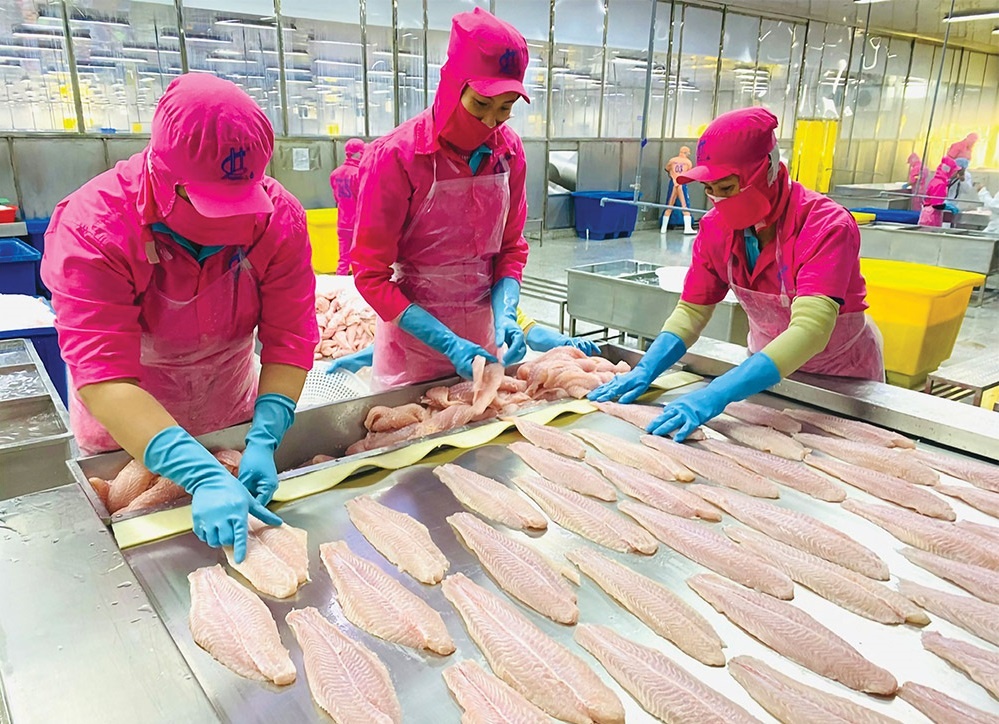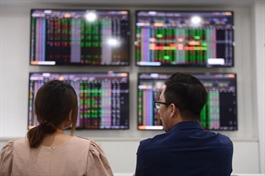Aquaculture stocks lean to speculative
Aquaculture stocks lean to speculative
Market experts suggest that investors could consider speculating on leading Vietnamese aquaculture stocks in the final two quarters of the year, as valuations become increasingly attractive due to the cyclical nature of the sector.

In a sector outlook report for the second half of the year, published last week by BIDV Securities Company, Vietcap Securities, Mirae Asset Securities, and Guotai Junan Securities, aquaculture stocks are identified as a promising sector, with momentum expected to carry into 2025 due to export recovery. However, growth may not be as rapid as in previous cycles.
Vietcap Securities’ updated outlook highlighted that aquaculture exports are anticipated to accelerate in the last four months of the year. “As the festive season approaches, Vietnam’s aquaculture export industry is expected to see stronger growth on-year during the latter half of 2024, with export revenues recovering to around $9.5-10 billion,” it said.
Guotai Junan Securities singled out FMC stock of Sao Ta Food JSC as a notable aquaculture stock with significant upside potential in the second half of the year, projecting a 19.8 per cent increase in share value by year-end.
“FMC is expected to continue increasing export revenues to its key market, Japan, while gradually penetrating the Chinese market. FMC currently ranks as the top aquaculture exporter to Japan. FMC’s new 203-hectare farm area, Vinfarm, has been fully operational since 2024, boosting its shrimp raw material supply capacity by approximately 40 per cent,” Guotai Junan Securities said. “Revenue and profit are forecasted to recover in the second half of 2024, alongside the recovery of export markets. However, attention should be paid to the risk of export market recovery being slower than anticipated.”
According to Mirae Asset Securities, aquaculture stocks exporting to major markets like the US and China are poised to benefit, with VHC shares of Vinh Hoan Corporation standing out as particularly promising.
Tran Thuy Trang, senior analyst of Institutional Research and Investment Advisory at SSI Research, supported this optimistic outlook for the last two quarters. “SSI forecasts that VHC and FMC profits will grow by 215 and 20 per cent, respectively, on-year in the last two quarters. For ANV stock of Nam Viet Corporation, I expect profits could reach $5.96 million, compared to the low base of $20.83 thousand in the second half of 2023,” Trang said.
In the final months of the year, the aquaculture stock group is expected to witness strong growth in revenue and profit, driven by cooling inflation in key importing countries such as the US and the EU, reduced inventory levels, increased demand for year-end holiday orders, and the low base from the second half of 2023.
“I do not recommend long-term investment in this stock group. However, for leading stocks with strong fundamentals and financial strength, investors may consider long-term investment when stock valuations become attractive,” Trang added.
Phan Linh, CEO of Techprofit, told VIR, “The aquaculture stock group is highly cyclical and strongly affected by environmental and geopolitical factors. Therefore, I lean more towards a speculative view rather than an investment perspective for this group. Individual investors should monitor early bottoming indicators in the sector, such as fingerling prices and fillet prices, to see if there are any improvements.”
However, the biggest risk when investing in aquaculture stocks in the second half of the year primarily stems from fluctuations in the international market. Despite the anticipated recovery, experts recommend that investors consider three key variables: consumption demand volatility, production cost fluctuations, and exchange rate volatility, all of which could negatively impact aquaculture stock prices into next year.
“Consumption demand for aquaculture in the US and China, Vietnam’s two primary export markets, could experience significant fluctuations due to macroeconomic factors like inflation, changes in trade policies, and the ongoing pandemic. This could directly affect the revenues and profits of enterprises,” Linh said.
“For exporting companies, exchange rate fluctuations could significantly affect profitability, especially with the USD showing a downward trend. Additionally, changes in import-export regulations from importing countries, particularly regarding food safety and quarantine measures, could create barriers for companies and affect the growth rate of stock prices.”






























